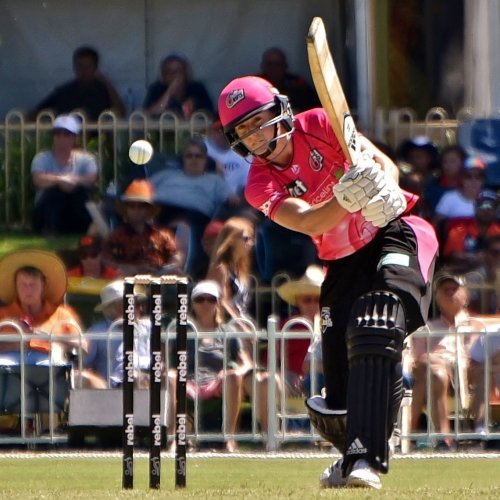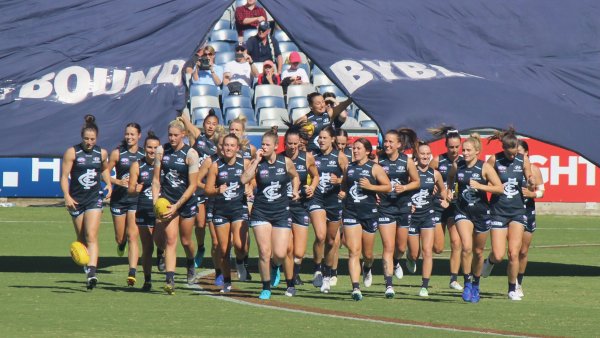If you follow sport in Australia, you more than likely know the names Ellyse Perry, Alyssa Healy, Meg Lanning, Katie Brennan, Moana Hope and Erin Phillips. These athletes regularly feature in reports relating to women’s cricket and Australian rules football (you may even recall seeing Moana Hope of the AFLW on Australian Survivor in 2018).
The national women’s T20 competition (WBBL) and the women’s Australian rules football (AFLW) competition are bolstered by the profile of these players in the competitions. The introduction of national women’s sporting competitions such as the WBBL and the AFLW have been positive for women athletes in Australia in a number of ways. The creation and exposure of these competitions has led to regular broadcasting of women’s sports, greater (or at least some) remuneration for women athletes, increased visibility and greater recognition of women as athletes.
However, it is difficult to overlook the comparisons with equivalent male sporting competitions, specifically, media broadcasts and player salaries
However, it is difficult to overlook the comparisons with equivalent male sporting competitions, specifically, media broadcasts and player salaries. Our recent research focuses on these disparities relating to both the WBBL (and BBL) and the AFLW (and AFL).
While these women are marketed by the associations and appear in advertising more generally, there are still significant differences in the opportunities for male and female athletes in these sports. This has recently been a topic of discussion as a small group of women in the AFLW oppose the current CBA and fight for greater remuneration and match time.

Sydney Sixers captain Ellyse Perry batting against the Perth Scorchers, in a WBBL match at Lilac Hill Park in Perth. Image: Wikimedia Commons
Show her the money!
Despite the interest in women’s national sporting competitions, women athletes are still paid significantly less than male athletes. In the national AFL competition, the average player salary in 2018 was $362,471. In fact, 31 AFL players were paid more than $800,000 for the 2018 season. Players in the AFLW are paid between $13,400 and $24,600 per season. AFLW player salaries are determined by a tiered payment scheme designed to reflect a pro-rata parity with the minimum wage for AFL players. The AFLW season is much shorter (and run at a different time to the AFL competition) and this is often cited as the reason behind the large disparity in the earnings for AFLW players.
Unlike the AFL and AFLW, the WBBL and BBL competitions consist of the same number of matches for male and female players and the men’s and women’s competitions overlap by several weeks. Despite this, there is also a large difference in the minimum retainers for BBL and WBBL players. BBL players command a minimum retainer of $30,000 (2018) a season, while for WBBL players, the figure is $10,292 (2018). Even by the final year of Cricket Australia’s Memorandum of Understanding (MOU), which comes into effect in 2022, WBBL players will still only be awarded a minimum retainer of $11,584 while for BBL players the figure rises to $40,064. Therefore, this large gap is reflected in both the difference in amounts, but also a large difference in the pay increase percentages for male and female players in the BBL and WBBL seasons in the coming years.
There appears to be a theme relating to broadcasting of women’s matches for these two sports and that is ‘don’t interrupt men’s sporting coverage’
(In)decent exposure? Broadcast coverage of WBBL and AFLW
There are several inconsistencies in the scheduling and broadcasting of AFLW/AFL and WBBL/BBL. There appears to be a theme relating to broadcasting of women’s matches for these two sports and that is ‘don’t interrupt men’s sporting coverage’. Head of the AFLW, Nicole Livingstone, wanted the AFLW to have ‘clean air’ (time to amass a following and grow), presumably without the ‘distraction’ of AFL matches. However, the AFLX and pre-season JLT Cup competitions have been broadcast on Friday nights during the AFLW season in 2019. In fact, a JLT Cup match was even broadcast on the (Friday) evening of International Women’s Day ahead of an AFLW match. Providing ‘clean air’ for the AFLW competition is evidently proving difficult.
Despite the BBL and WBBL competitions consisting of the same number of matches in each season, our research has shown a disparity in both the number of matches that are broadcast on television and the number of matches that are broadcast during ‘primetime’ slots. All 59 matches of the BBL in 2018/2019 were broadcast on pay television and 43 matches were broadcast on free-to-air television. In the WBBL, 23 (of the 59) matches were broadcast on television (on both pay television and free-to-air). The timing of these broadcasts were are also pertinent with 48 (of the 59) BBL matches broadcasted in primetime (from 6.15pm onwards) and only six of the WBBL matches broadcast in a similar timeslot (from 6.15pm onwards).

Carlton AFLW team during a match against Geelong at Kardinia Park in round 4 of the 2019 AFL Women’s season. Image: Wikimedia Commons
Can we fix it? Yes we can!
The inequity needs to be addressed, seriously, by the sporting bodies. Cricket Australia must realise the benefit of increasing their support and exposure of the WBBL players, which features many of the stars of the popular, record breaking (and uncontroversial!) national women’s team and act upon this. It is unreasonable to expect the WBBL players to rise to their full potential if not given the same financial and commercial opportunity as the men.
It is unreasonable to expect the WBBL players to rise to their full potential if not given the same financial and commercial opportunity as the men.
A strong stance is also required from the AFL to ensure that the space promised for the women’s competition to thrive is available. If the AFL is genuine about promoting AFLW, the timetabling of men’s pre-season matches cannot be allowed to impinge on AFLW scheduling and broadcasting. The AFL will need to accept that some financial loss in the short-term for the AFL, would allow the AFLW competition and players impetus to flourish in the long term, ultimately providing the AFL with a stronger brand overall.
These inconsistencies in primetime coverage and remuneration impact on fans, viewers and players. Currently, a lack of exposure during primetime viewing slots and the inequities of payment ensures that women’s sporting competitions remain secondary to the traditional ‘main events’ and any remedy to this must include cultural change within the sports and the media.




